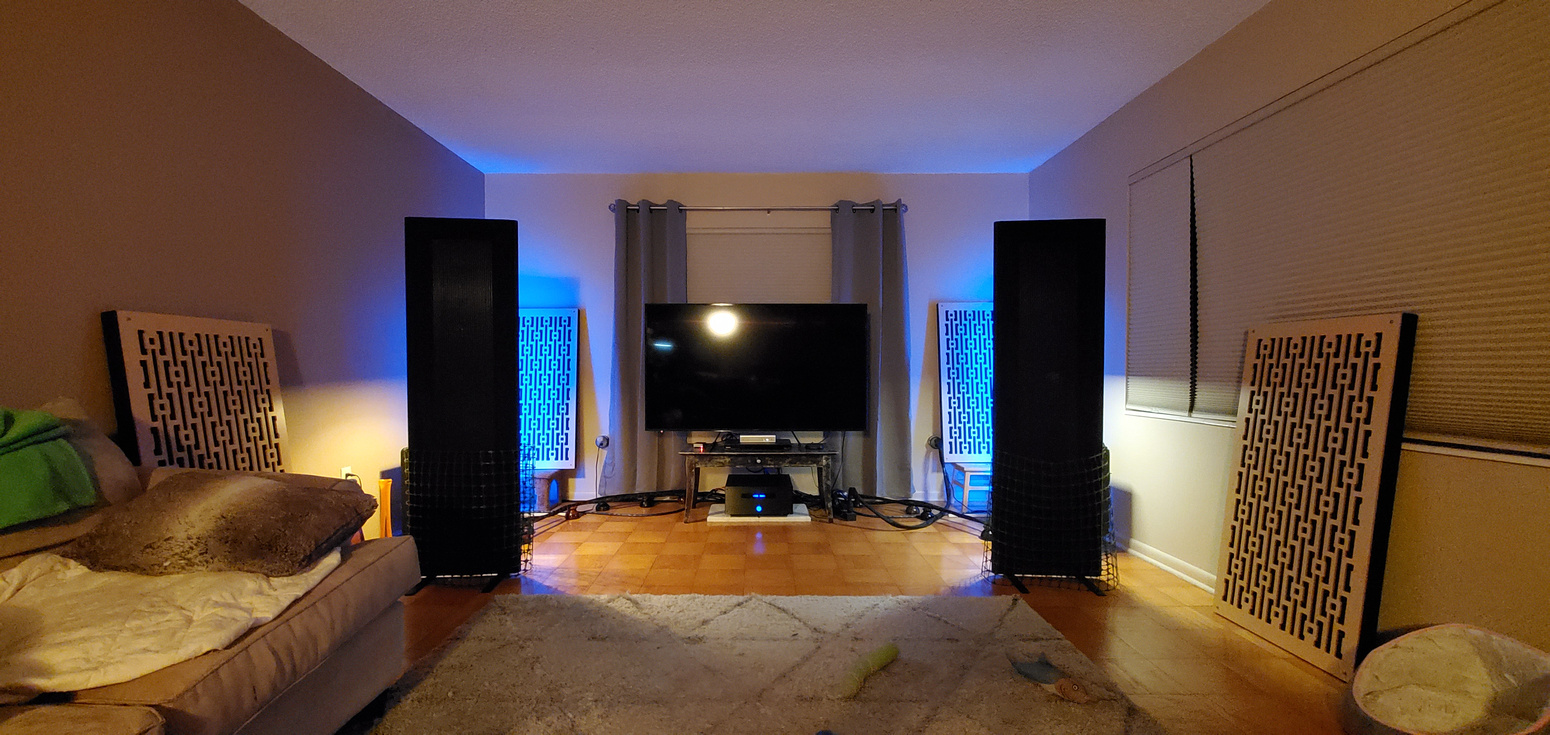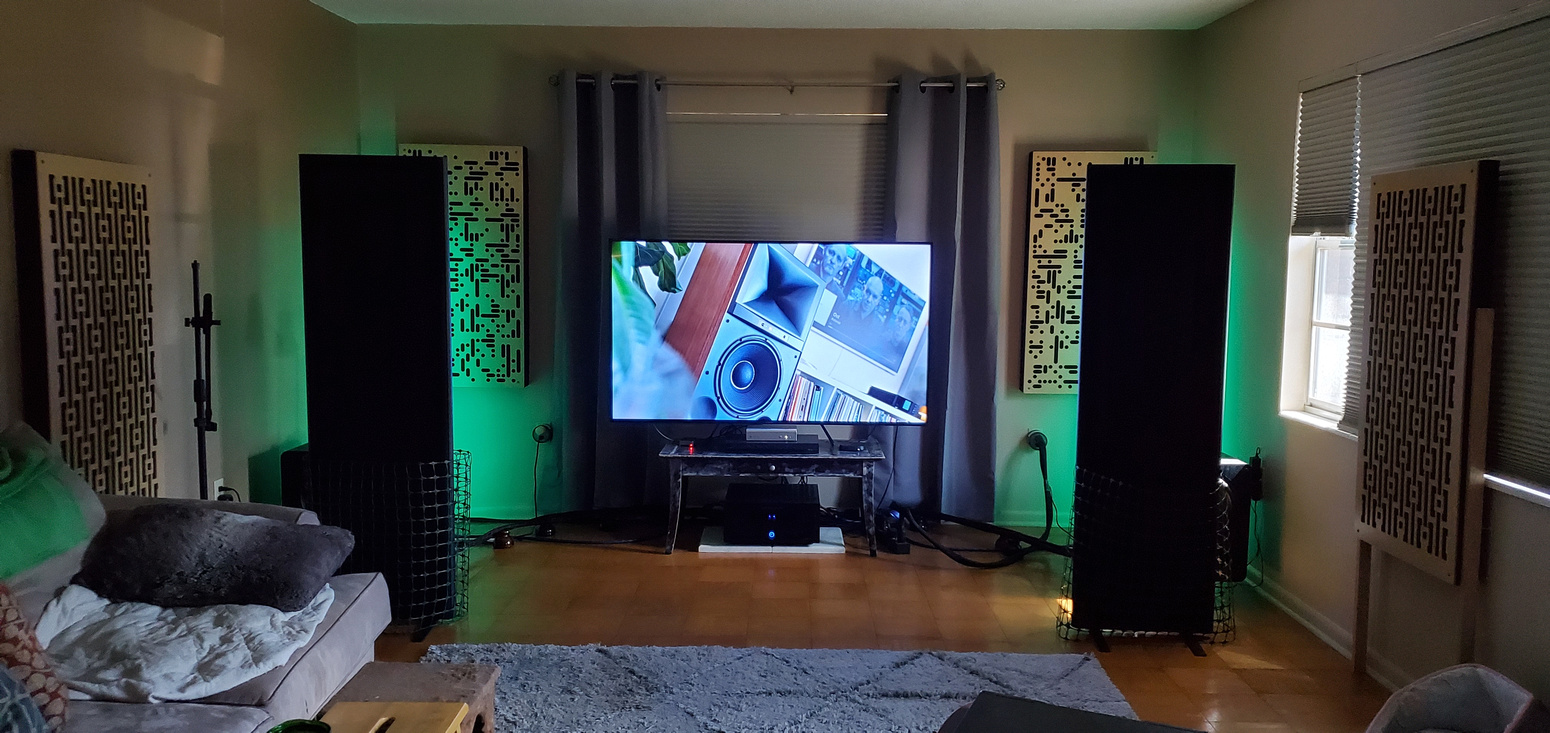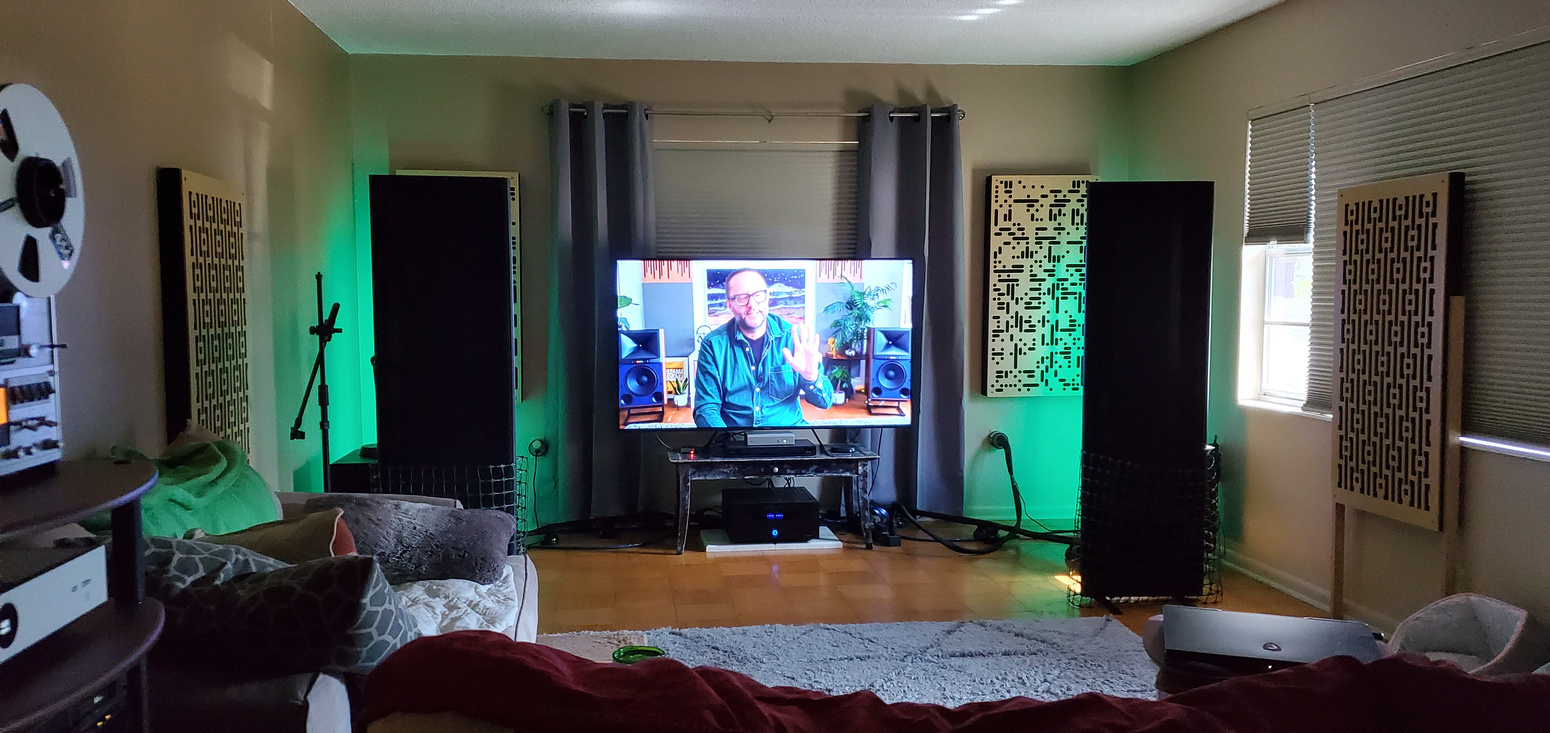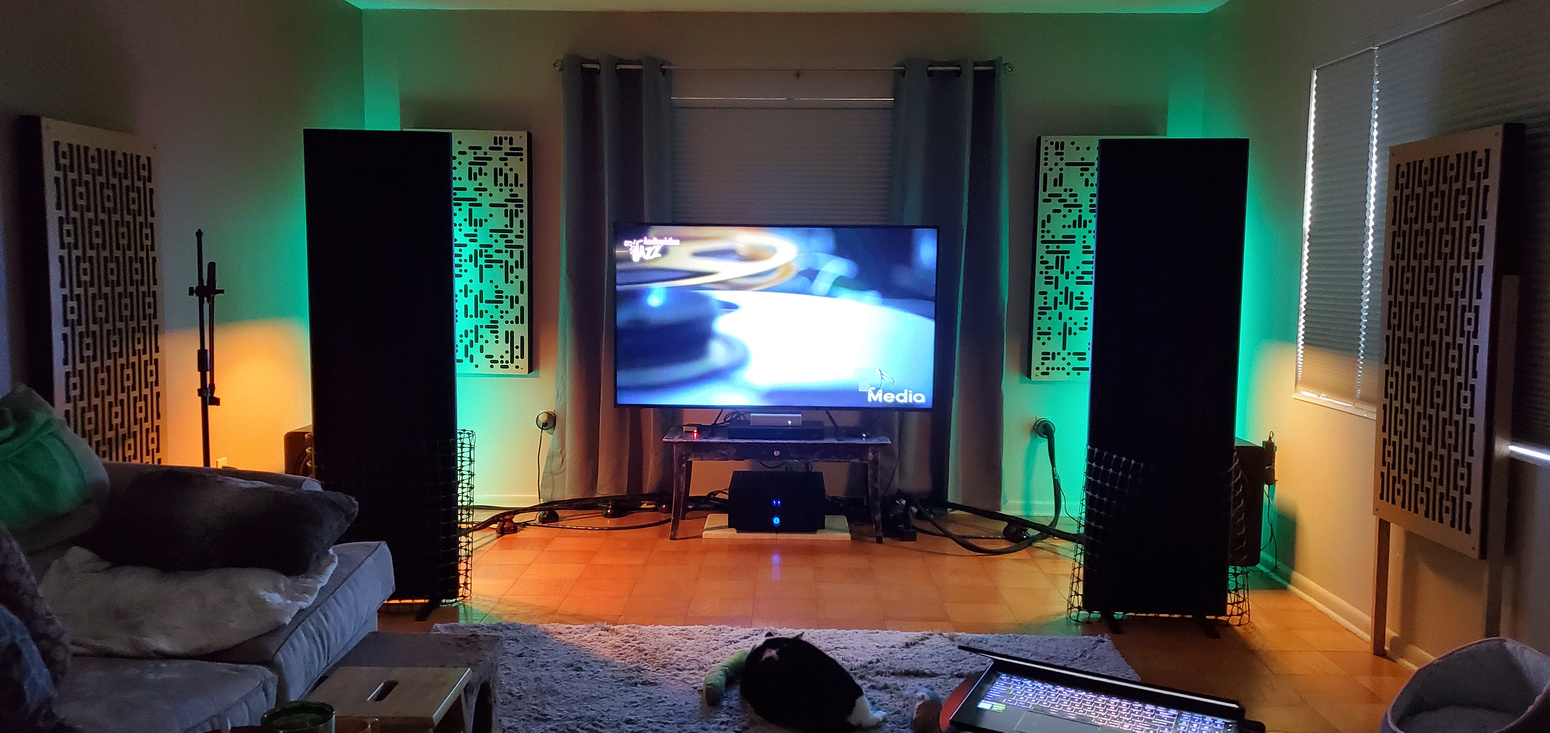I wanted to revisit this again...
After re-reviewing my email from GIK as well as reading in a few forum posts from Maggie owners (with similar sized rooms), we have all been recommended to use the 4" Alpha 2D panels on the front wall directly behind the speakers as they absorb and diffuse sound as well as function as bass traps. GIK also recommend the same for the back wall, however I chose to go with the 2" Impressions panels on the back wall. I have four panels coming for the back wall, but not sure that I will use all four of them back there. They would have to be butted right up against each other as one continuous 8' wide panel so to speak. I may just put two back there and one on either side of my listening position on the side walls.
Again, it's not like they are permanently affixed to the walls, so if things don't sound right, I can always move them around. Also, with the 2" Impressions, if I want, I can mount them with 1" to 2" stand-offs for an air gap between them and the wall to lower their frequency of absorption some.
I'm also interested in those tri-corner triangle panels that mount up at the ceiling/wall corners. I've found some by ATS Acoustics and PrimeAcoustics, and they refer to them as tri-corner bass traps. I don't know how effective they are vs large bass traps that get stacked in the corners of the room, floor to ceiling. Probably nowhere near as effective, but I also don't want to take up a bunch of floor space nor do I want the room to look odd or like a studio. The PrimeAcoustics Cumulus tri-corner traps are said to be effective down to 100 Hz, and I effectively have 5 corners in this room where I could mount them.
also, I just got in that thermal/blackout curtain to go on the front wall behind the TV, so I'll be installing that shortly. We don't ever use that window, and if the curtain ends up absorbing too much and killing the sound, I can always open it up some and mount a couple of diffuser panels in the center of the window. The only main reason for that curtain is to cover the ends of the window to make it look centered on the wall instead of off to the right like it is. Plus, we are both tired of looking at those garish homemade hillbilly looking window treatments from the previous owners of this house.
I might look into getting a matching curtain for the large window in the right wall, but lighter/thinner as to not be too absorbent. Though I have to say, with the way the Maggies project sound, there's very little to no difference with having the blinds in that window opened or closed. IOW, not much in the way of 1st reflections on the side walls, which is a good thing.
At any rate, that's where I'm at at the moment with this "project".
I don’t agree since the Alpha 2D’s work optimally at 500hz (not sure how that’s “bass” in their definition). But at least, as you said, you can move them if they don’t work out well. I think you’ll find a midrange suck out and find you have to play them louder since the back waves are being absorbed. But trial and error is the only real test. Will be interesting to see what you hear.
Sent from my iPad using Tapatalk Pro









